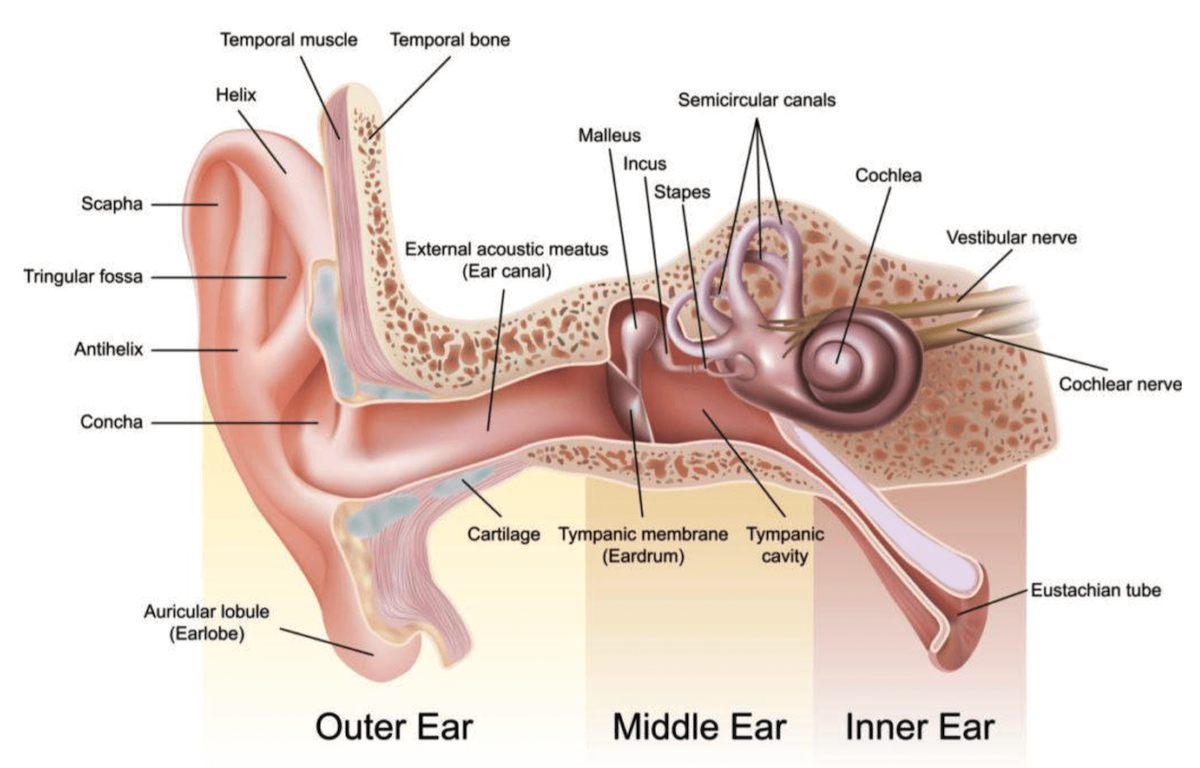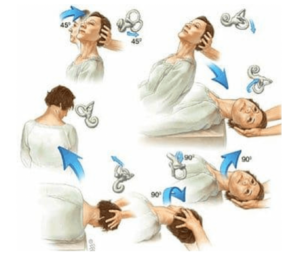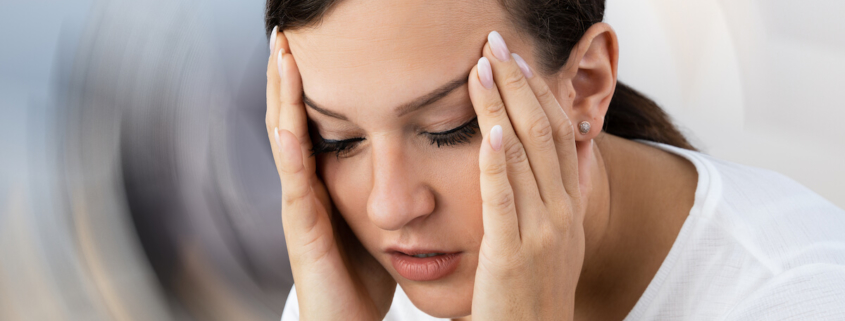Vertigo, BPPV and the Vestibular System
Do you find yourself losing your balance, feeling dizzy or nauseous? You may be experiencing vertigo caused by issues with your vestibular system. You would also benefit from a targeted assessment to determine the causes of your symptoms using specific techniques and exercises to improve symptoms and get you feeling back to normal.
The Vestibular System is found inside your inner ear and sends signals primarily to your brain stem. It is responsible for integrating sensory stimuli and movement and for keeping objects in visual focus as the body moves.
Issues With Your Vestibular System Can Cause Symptoms Such As:
- Dizziness
- Spinning sensation
- Nausea
- Vomiting
- Lightheadedness
- Ringing in the ears
- Double vision
- Impaired balance
Vertigo and dizziness are symptoms rather than a disease. Vertigo refers to the sensation of spinning or whirling that occurs due to a disturbance in your balance system. In addition, vertigo is used to describe feelings of dizziness, lightheadedness, faintness, and unsteadiness. Vertigo usually occurs because of a disorder in the vestibular system. The vestibular system is the structures of the inner ear, vestibular nerve, brainstem, and cerebellum.

Benign Paroxysmal Positional Vertigo (BPPV)
Benign Paroxysmal Positional Vertigo (BPPV) is one of the most common vestibular conditions. BPPV is rarely serious except for the possible increase in the chances of falling. BPPV is caused by the crystals in the inner ear becoming unstuck from their usual place and freely moving in one or more of the three ear canals that make up the inner ear. These ear canals are filled with fluid and tiny hair cells, and they tell our brain and eyes about the speed and direction we are moving. When the crystals get into these canals, they disrupt the fluids’ normal movement past the hairs, sending our brain confusing information that makes us feel the spins (vertigo). You may also feel your eyes moving funny as they vibrate side to side, referred to as nystagmus.
Anyone can experience this in their lifetime; however, it is more common in people over the age of 50 and more common in women. Injuries to the balance organs of the inner ear, head trauma or whiplash can also cause BPPV. In addition to vertigo, other symptoms may include:
- Dizziness
- Imbalance
- Difficulty concentrating
- Nausea
- Vomiting
BPPV is typically unilateral, which means it occurs either in the left or right ear. Although, in more rare cases, it is bilateral, causing both ears to be affected. BPPV may be experienced for a very short duration, or it may last a lifetime, with symptoms occurring in intermittent patterns that vary by frequency, duration, and intensity. The most common cause of BPPV in people under the age of 50 is head injury and is presumed to result from a concussive force that displaces the otoconia. In people over 50 years of age, BPPV is primarily idiopathic, meaning it occurs for no known reason but is usually linked to natural age-related degeneration of the otolithic membrane.
Benign Paroxysmal Positional Vertigo Treatment
Sometimes, BPPV will go away on its own within a few weeks or months; However, the symptoms can be debilitating. At Diversified Health, our Vestibular Experts, Chiropractor, Dr. Caitlin Sellan and Physiotherapist, Jennifer Mildon, can treat you with an in-office particle repositioning procedure. This procedure consists of several simple and slow maneuvers for positioning your head. The goal of these movements is to move the particles from the fluid-filled semicircular canals of your inner ear into a tiny bag-like open area that houses one of the otolith organs where these particles don’t cause trouble and are more easily resorbed. You will also be given home repositioning exercises to help maintain your treatment effect. In many cases, only 1-2 treatments are needed to resolve symptoms.

What to Expect During Your BPPV Treatment
The procedure involves holding four positions for about 30 seconds each or for as long as you experience symptoms in that hold position. Once symptoms have stopped, your Vestibular Clinician will get you to stay in the position for an additional 30 seconds while watching your eyes for abnormal movements. The procedure may be repeated more than once within one treatment session. They may teach you how to perform the procedure yourself so that you can perform it at home as needed, although nearly 80% of people experience relief after the initial treatment.
Contact our clinic today for more information on Vertigo-related treatments or to book with our Physiotherapist Jennifer Mildon or with our Chiropractor Dr. Caitlin Sellan who specializes in Vestibular treatments. Please contact us at 250-382-0018 or book online at www.diversifiedhealth.janeapp.com.
#physiotherapy #vertigo #balance #dizzy #chiropractor #victoriabc #balance #health #multidisciplinaryclinic #vestibular





